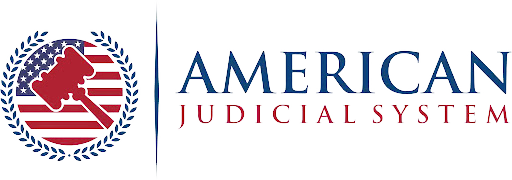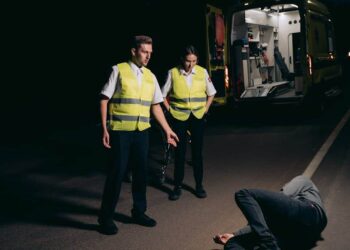Life unfolds in a continuous, often unremarkable rhythm until a sudden, jarring moment shatters its predictable flow. A vehicular collision is more than just a crumpled mass of metal; it’s an abrupt interruption, a violent punctuation mark in someone’s story. The immediate aftermath may involve screeching tires, shattering glass, and the horrifying sound of impact, but the true devastation lies far beyond the visible wreckage. Beyond the chaos and debris, a profound human drama quietly begins to unfold, initiating a challenging and often prolonged journey. The individual at the heart of such an event is abruptly cast into a new, unforeseen reality. This is not merely an incident; it’s the genesis of a fundamental shift, demanding a rebuilding process that touches every facet of existence.
This rebuilding process often involves several critical aspects:
- Physical recovery: Addressing immediate and long-term injuries.
- Emotional healing: Coping with trauma, anxiety, and distress.
- Financial stability: Managing medical bills, lost wages, and future expenses.
- Legal navigation: Understanding rights and seeking appropriate recourse.
- Social adjustment: Re-engaging with daily life, work, and relationships.
The Immediate Aftermath: Shock, Injury, and Disorientation
In the chaotic seconds following an accident, time often distorts, and the world can feel simultaneously frozen and hyper-real. The immediate scene is one of stark contrast: the silence that sometimes follows a deafening impact, punctuated by cries for help or the wail of sirens. Victims often experience a bewildering blend of physical pain and profound psychological shock. Injuries can range from superficial lacerations and bruising to severe fractures, internal damage, spinal trauma, or traumatic brain injuries, each demanding immediate, critical medical attention. The sudden jolt from routine life into a state of acute vulnerability and emergency can be profoundly disorienting.
Once simple decisions become monumental, and the basic certainty of personal safety is irrevocably shaken, leaving individuals grappling with a new, terrifying reality. The immediate aftermath can be especially harrowing in scenarios like construction site incidents, where the environment itself can exacerbate the shock and severity of injuries. In such complex situations, seeking guidance from an abogado de accidente de construcción, such as Oresky & Associates PLLC, who understands specific industry risks, can be crucial.
Navigating the Labyrinth of Recovery: Physical and Emotional Healing
Many individuals grapple with post-traumatic stress, anxiety, persistent fear, and even depression, which can silently erode their sense of well-being long after visible wounds have closed. Daily routines, work, and personal relationships often suffer, as the energy once directed toward living is now consumed by recovery. The presence of robust support systems—from family and friends to skilled therapists—becomes indispensable in this demanding period. Understanding one’s legal standing can also alleviate immense pressure, allowing victims to channel their focus entirely on recuperation.
| Aspect of Recovery | Description | Challenges | Support Mechanisms |
| Physical Healing | Restoring bodily function and health after injuries. | Pain management, limited mobility, lengthy therapy, and potential for permanent impairment. | Physiotherapists, doctors, rehabilitation clinics, and assistive devices. |
| Emotional Healing | Addressing psychological trauma and mental health impact. | PTSD, anxiety, depression, grief, fear of recurrence, altered self-perception. | Therapists, counselors, support groups, family, and friends. |
| Social Reintegration | Re-establishing connections and participation in daily life. | Isolation, changes in relationships, difficulty returning to work or hobbies, and stigma. | Community resources, vocational rehabilitation, social workers, and peer support. |
The Financial Burden: Medical Bills, Lost Wages, and Future Costs
The physical and emotional tolls of an accident are often compounded by an overwhelming financial aftermath, a silent but relentless burden. Immediate medical care, emergency room visits, and initial surgeries represent only the beginning of a cascade of expenses. Prolonged rehabilitation, ongoing therapy, prescription medications, and specialist consultations accumulate rapidly, creating a daunting financial mountain. Beyond these direct healthcare costs, victims frequently face the crippling reality of lost income. The inability to return to work, whether temporarily or permanently, can devastate household finances, jeopardize savings, and impact the ability to meet daily needs.
Rebuilding a New Normal: Resilience and Moving Forward
The aftermath of a serious accident rarely involves a return to the exact life that existed before; instead, it often necessitates the painful but ultimately empowering process of building a “new normal.” This phase is characterized by profound adaptation, as individuals come to terms with lasting physical limitations, emotional scars, and altered life paths. Yet, within this struggle, the remarkable resilience of the human spirit often shines through. Stories of individuals relearning basic motor skills, finding new vocations, or discovering deeper reserves of inner strength are powerful testaments to the capacity for overcoming adversity.
Here’s a comparison of life before and after a major accident:
Life Before the Accident:
- Routine and Predictability: Daily life often followed established patterns with a sense of security and familiarity.
- Physical Autonomy: Unrestricted movement and capacity to engage in activities without significant physical limitations.
- Unburdened Mental State: Fewer anxieties are directly tied to physical well-being or the trauma of an event.
- Financial Stability: Earning capacity and expenses were typically managed within established norms.
Life After the Accident:
- Adaptation and Adjustment: A continuous process of adapting to altered physical and emotional realities.
- Physical Limitations: Potential for chronic pain, reduced mobility, or reliance on assistive devices.
- Psychological Impact: Coping with PTSD, anxiety, depression, and a heightened sense of vulnerability.
- Financial Strain: Managing medical bills, lost wages, and potential long-term care costs.
- Redefined Priorities: A shift in focus towards health, well-being, and often, a deeper appreciation for life.
- Enhanced Resilience: Discovery of inner strength and a profound capacity for overcoming adversity.
Conclusion
Behind the impersonal statistics of traffic incidents lies a profound human narrative—a story of abrupt disruption, immense struggle, and the arduous process of rebuilding. Every collision leaves an indelible mark, setting in motion a complex journey of physical recovery, emotional healing, and financial navigation. The impact extends far beyond the immediate scene, rippling through every aspect of a person’s life.
This is a powerful reminder that behind every dented bumper and shattered windshield is a life irrevocably altered, needing painstaking reassembly. Recognizing this demands empathy and a collective commitment to understanding accident victims’ comprehensive needs. It also underscores the critical importance of preparedness—knowing resources and understanding one’s rights. By fostering greater awareness and support, we champion the long, often quiet, journey of healing and reconstruction.










